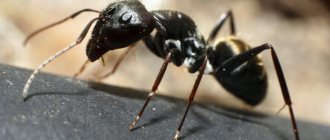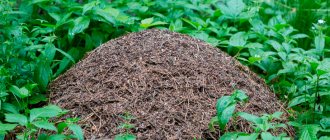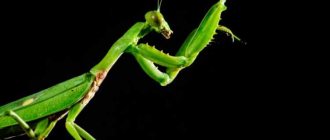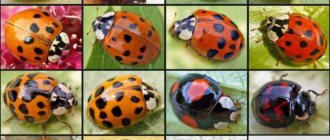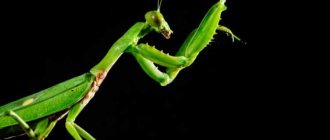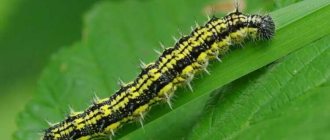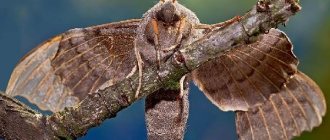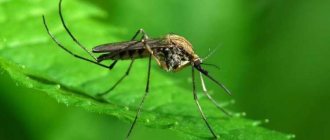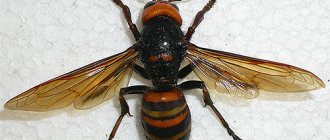Ants can rightfully be considered the most popular representatives of the animal world. They live in almost all geographical latitudes and there is hardly a person in the world who has not seen a living ant in his life, this insect is amazing in behavior, but at the same time typical in its appearance.
According to researchers, the ant population of the earth is the largest among arthropods.
Metamorphoses of evolution and adaptation to various environmental conditions largely determined the behavioral diversity and, in modern language, the superpowers of various species of ants.
Resistance of ants to frost and heat
The survival temperature of ants ranges from +50 to -50 degrees Celsius.
Species of ants living in the Sahara, where the sand heats up to 70 degrees, in addition to a metabolism specially adapted to the heat, are saved by the fact that their backs are covered with silvery hairs, which, by reflecting the rays of the sun, cool the body of the insects.The cold resistance of ants is ensured by special biochemical processes that result in the production of alcohol compounds that act as antifreeze.
Harm
Ants are able to settle in well-heated places. For example, in apartments they prefer to settle in kitchens and bathrooms. They can be located under parquet, tiles, baseboards and in various crevices.
Ants can be dangerous when they crawl through rotten food scraps and other waste and get into food products. They are capable of transmitting dangerous diseases such as diphtheria, typhus and many others. Ants can spoil any food. Fighting them is quite problematic, since they place their nests secretly, and the use of poisons may be ineffective. The bait method works best to control ant colonies.
Pharaoh ants are the most annoying guests
The pharaoh ant (also called the sugar ant) is the most common type of apartment (or house) ant.
The main difference between domestic ants is the tolerance of queen ants to each other, which is not typical for their wild relatives. Thanks to this property, rapid colonization of human housing by ants is ensured.The indestructible squads of these small 1-2 mm red insects, which have flooded the whole world as a result of the development of shipping from India, are capable of infuriating even the most nature-loving owners.
Depending on the conditions, the females live next to each other or hide in different secluded crevices, forming a single community, fed by foraging ants running around in plain sight.
Even the fact that where ants live there are no bed bugs or cockroaches is no consolation, because they themselves are also carriers of harmful microbes.
Distribution area
Ants are an extremely numerous species of insects that have spread to almost all continents and have adapted to different climatic zones. The exception is the harsh Arctic and Antarctica, as well as the cold islands of Iceland and Greenland. It is common for many ants to go into long-term hibernation after the onset of cold weather.
As homes, insects set up anthills for themselves, which are built on rotten wood, soil or small stones. Some ants are able to capture the nests of other insects, and also settle down near human dwellings.
Red forest ants are multifunctional forest defenders
These brown and larger relatives of house ants, which protect forests from pests, loosen the soil, carry tree seeds and build cone-shaped nests up to two meters high, are listed in the Red Book of Endangered Species.
Ants also contribute to the survival of the forest bird population; various beetles and aphids gather and reproduce in anthills, and the ants themselves also become protein food for all types of forest birds.They destroy caterpillars, pupae and adults of pine sawfly, leaf rollers and other insects that eat the bark, roots and leaves of trees in incredible quantities.
In addition, this type of ant is a source of the drug formic acid, which increases the risk of destruction of this population.
How to get rid of ants
Given the huge population of insects and their ability to reproduce, fighting them, as a rule, brings only temporary results. The most effective in killing insects are those based on diazinon and chlorpyrifos.
The first has a nerve-paralytic effect on ants, leads to their death and remains effective for 2-3 weeks. The second one paralyzes the respiratory system and remains effective for up to 2 months. Popular means for controlling insects in a summer cottage:
- "Absolute"
- "A great warrior"
- "Ant-eater"
- "Thunder"
- "Medvetox" and others.
Traditional methods of getting rid of ants:
- Smells. Insects are extremely susceptible to unpleasant odors, so a great way to drive them away is to place strong-smelling herbs (anise, wormwood, sage) or food scraps (herring, garlic, tomato leaves) near the anthill. The cardinal method will be kerosene - they need to water the insects' home, but do not set it on fire.
- Hunting belts. If ants cause damage to trees, the trunks should be wrapped in foil or polyethylene with foam rubber placed inside at a distance of 30-40 cm from the ground.
- Moisture. Insects do not like water, so plants need to be surrounded by holes that regularly receive large amounts of water. If the anthill has already been built, it can be poured with boiling water in several stages; a more humane way is to pour cold water in large volumes.
- Yeast. Add a little honey, sugar and water to the package of yeast. Distribute the gruel into matchboxes and place them near the ants’ homes; soon they will be abandoned by them.
- Lime and carboxylic acid. Mix the substances in equal proportions and treat the trunks of trees and large shrubs.
Small populations of ants located in the garden are unlikely to cause damage to the crop, but will protect it from pests. If there are several anthills and they are quite large, measures should be taken. Despite the usefulness of these insects, being around them is not only unpleasant, but can also become dangerous for humans, especially if there are small children in the house.
Interesting Facts
Ants are one of the most “humanized” representatives of the fauna, and there are good reasons for this: tens of thousands of species of this insect amaze with the variety of behavioral models developed in the process of survival.
It is the behavioral characteristics of various species that have given rise to analogies and corresponding names that are very reminiscent of people’s nicknames.
Thus, Amazon ants steal the larvae of other species, turning the newly hatched young into their slaves.
There is also a type of parasitic ant, non-working very small insects that find shelter and food with their relatives.
There are also many other figurative names that suit not only the appearance of the species, but also reveal its “character”: bullet ants, soldier ants, harvester ants, pygmy ants, thief ants, etc.
Nutrition
The diet of ants is quite varied, but largely depends on the species. As a rule, they eat vegetation and animal remains. Ants feed several times a day.
Dead insects, as well as animal remains and trophic eggs are used as protein food, which serves as building material for the development of larvae. House ant larvae prefer dairy products, egg dishes and gelatin. The queen needs protein food, which must be chewed by the nursing ants.
Ants use honeydew as carbohydrates. It is the juice of the leaves, which is released during temperature fluctuations. In addition, their diet contains honeydew - secretions of insects, in particular aphids. Ants tend to grow aphids for their own purposes. They herd it, raise it and protect it from other ants. After which they are milked and the resulting milk is consumed.
In addition, ants feed on various seeds and plant roots, nuts and mushrooms. These insects are also notable for the fact that they store about 1 kilogram of raw materials for the winter. For example, leaf-cutter ants bring leaves to their anthills, which they then chew and store in specially equipped chambers. After which, mushrooms begin to grow from this foliage, which the ants then use as food.
Photo of an ant
Where does the ant live?
Ants adapt well to any environmental conditions, thanks to this they were able to spread across all known continents. They are not found only at the North Pole.
As a rule, ant families choose rotten wood as their habitat, settle under large stones, or build fortifications themselves. A standard anthill can consist of 4-6 million needles, and the insects themselves constantly drag them from top to bottom, especially after rain. Thanks to this, the dome of their home is always dry inside.
Social structure of the colony
An ant family is a highly organized community with its own rules, which are strictly followed by absolutely all insects. All individuals included in the family are divided into 3 castes:
- ant queen;
- males;
- working individuals.
The queen ant is a fertilized female whose sole task is to lay eggs. Most often there is one queen per family, but some varieties allow several queens per family. Initially, it is the female who finds a place to live, where she lays the first batch of eggs, from which the first members of the future large ant family are born.
It is easy to recognize the queen among ants - this is the largest individual, the size of which can be twice as large, but it is difficult to find her, since the queen spends all her time in the nest, not getting out.
Males are winged ants that are needed solely to fertilize young females. They can be compared to drones in a bee colony. Soon after mating, the male dies.
Worker ants are sterile females. There are the most of them in the family, and all the worries about the anthill and its inhabitants fall on them.
There is a strict hierarchy in the ant family. Each worker performs certain duties, and experienced insects teach young ones, passing on their knowledge and experience. So, what kind of ants are there in the anthill:
- nannies - care for eggs and larvae;
- builders - they are engaged in arranging the anthill, expanding it, restoring it in case of destruction;
- foragers - get food;
- doctors - monitor the health of family members, for example, they can amputate a damaged limb;
- soldiers - these ants protect the anthill and attack other types of ants;
- storekeepers - monitor the safety of food supplies inside the anthill.
As the size of the community increases, the number of professions increases, and the specialization of each individual narrows.
